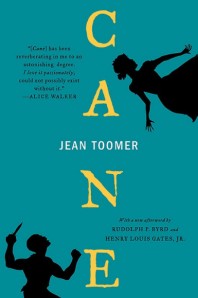 In Jean Toomer’s “Cane” the author works to use a rhythmic-jazz-like style that is uniquely his to relay the stories of Blacks in the Southern states of America. He uses symbols and imagery to speak to this lifestyle indirectly. His poetic tone is expressed in both the narratives as well as the poetry itself. We first encounter this tone in the first narrative “Karintha”. We experience his poetic voice by way of the simple sentences, vivid imagery, and the repetition of certain words and phrases. Toomer catches the reader’s eye immediately as the narrative begins with a lyrically smooth sentence, “Men had always wanted her, this Karintha, even as a child, Karintha carrying beauty, perfect as dusk when the sun goes down” (3). This line is significant due to the fact that it is connected to a short introductory poem to the narrative piece that describes the skin of a woman and likening it to the “dusk on the eastern horizon…when the sun goes down” (3).
In Jean Toomer’s “Cane” the author works to use a rhythmic-jazz-like style that is uniquely his to relay the stories of Blacks in the Southern states of America. He uses symbols and imagery to speak to this lifestyle indirectly. His poetic tone is expressed in both the narratives as well as the poetry itself. We first encounter this tone in the first narrative “Karintha”. We experience his poetic voice by way of the simple sentences, vivid imagery, and the repetition of certain words and phrases. Toomer catches the reader’s eye immediately as the narrative begins with a lyrically smooth sentence, “Men had always wanted her, this Karintha, even as a child, Karintha carrying beauty, perfect as dusk when the sun goes down” (3). This line is significant due to the fact that it is connected to a short introductory poem to the narrative piece that describes the skin of a woman and likening it to the “dusk on the eastern horizon…when the sun goes down” (3).
Throughout Toomer’s work he perfected this skill of writing poetry and connecting his narratives to the poetry sometimes directly and other times indirectly. “Karintha” is an example of Toomer beginning with a poem and using his narrative work to allow the reader to get to know the unnamed woman in the poem. This style is also practiced in his poem “Portrait in Georgia” and his narrative “Blood-Burning Moon”. In “Portrait in Georgia” Toomer paints a vivid picture of a lynching but uses the qualities of a woman that are usually spoken of sexually. He contrasts black hair with the lyncher’s rope, “braided chestnut, coiled” and “…slim body, white as the ash of black flesh after flame”. This poem serves to symbolically attack the image of Georgia as a state. Toomer is making a bold statement saying that when he thinks of Georgia he thinks of black men hanging from trees being set on fire either caused by a white woman or a black woman. This idea is then described and explained in “Blood-Burning Moon” as the reader is introduced to a black couple. A White man named Bob Stone wants the Black woman Louisa, but the black man, Tom Burwell, would not allow it and he attacks the black man. As a result the white man retaliates by getting a mod together and lynching the man simply because he was disrespected by this black man who refused to “stay in his place”. Here we see an example of a black man set ablaze at the hand of a white man, because of his love for a black woman. Here the reader is sent back to “Portrait of Georgia” by way of the imagery. We see that this black man dies at the hand of “hair – braided chestnut, coiled like a lyncher’s rope”, his love for Louisa, and is left to whiten like the “ash of black flesh after flame”. These pieces serve to show Toomer as a very skilled writer in his ability to connect these two pieces, but even more importantly he shares this Southern reality in such a way that one does not take offense to it, because he did not share it in a factual tone but, he shared it in a fictional one so the reader is inclined to read these pieces as stories rather than an outcry for social change. Many of Toomer’s pieces throughout “Cane” accomplish this task successfully.